With new technologies revolutionizing data collection, wildlife researchers are becoming increasingly able to collect data at much higher volumes than ever before. Now we are facing the challenges of putting this information to use, bringing the science of big data into the conservation arena. With the help of machine learning tools, this area holds immense potential for conservation practices. The applications range from online trafficking alerts to species-specific early warning systems to efficient movement and biodiversity monitoring and beyond.
However, the process of building effective machine learning tools depends upon large amounts of standardized training data, and conservationists currently lack an established system for standardization. How to best develop such a system and incentivize data sharing are questions at the forefront of this work. There are currently multiple AI-based conservation initiatives, including Wildlife Insights and WildBook, that are pioneering applications on this front.
This group is the perfect place to ask all your AI-related questions, no matter your skill level or previous familiarity! You'll find resources, meet other members with similar questions and experts who can answer them, and engage in exciting collaborative opportunities together.
Just getting started with AI in conservation? Check out our introduction tutorial, How Do I Train My First Machine Learning Model? with Daniel Situnayake, and our Virtual Meetup on Big Data. If you're coming from the more technical side of AI/ML, Sara Beery runs an AI for Conservation slack channel that might be of interest. Message her for an invite.
Header Image: Dr Claire Burke / @CBurkeSci

Explore the Basics: AI
Understanding the possibilities for incorporating new technology into your work can feel overwhelming. With so many tools available, so many resources to keep up with, and so many innovative projects happening around the world and in our community, it's easy to lose sight of how and why these new technologies matter, and how they can be practically applied to your projects.
Machine learning has huge potential in conservation tech, and its applications are growing every day! But the tradeoff of that potential is a big learning curve - or so it seems to those starting out with this powerful tool!
To help you explore the potential of AI (and prepare for some of our upcoming AI-themed events!), we've compiled simple, key resources, conversations, and videos to highlight the possibilities:
Three Resources for Beginners:
- Everything I know about Machine Learning and Camera Traps, Dan Morris | Resource library, camera traps, machine learning
- Using Computer Vision to Protect Endangered Species, Kasim Rafiq | Machine learning, data analysis, big cats
- Resource: WildID | WildID
Three Forum Threads for Beginners:
- I made an open-source tool to help you sort camera trap images | Petar Gyurov, Camera Traps
- Batch / Automated Cloud Processing | Chris Nicolas, Acoustic Monitoring
- Looking for help with camera trapping for Jaguars: Software for species ID and database building | Carmina Gutierrez, AI for Conservation
Three Tutorials for Beginners:
- How do I get started using machine learning for my camera traps? | Sara Beery, Tech Tutors
- How do I train my first machine learning model? | Daniel Situnayake, Tech Tutors
- Big Data in Conservation | Dave Thau, Dan Morris, Sarah Davidson, Virtual Meetups
Want to know more about AI, or have your specific machine learning questions answered by experts in the WILDLABS community? Make sure you join the conversation in our AI for Conservation group!
No showcases have been added to this group yet.
University of St Andrews
I am a Senior Lecturer at the University of St Andrews, Scotland. My research is focused on developing acoustic species classifiers for marine mammals worldwide.
- 0 Resources
- 2 Discussions
- 6 Groups
- @kwalker3
- | she/her
The Nature Conservancy
Spatial Conservation Scientist and Program Manager
- 0 Resources
- 0 Discussions
- 3 Groups
- 0 Resources
- 0 Discussions
- 5 Groups
I am a technologist of 20+ years. My undergraduate degree is in conservation biology, and I am looking for opportunities to bridge my technical expertise with conservation efforts.
- 0 Resources
- 0 Discussions
- 1 Groups
Zoologist, currently serving as Head of Field Studies at Absolute Adventure (UAE). An environmental education professional with expertise in program development: field studies, wildlife conservation, research-based fieldwork, and outdoor education.
- 0 Resources
- 0 Discussions
- 4 Groups
- @LukeSwaby
- | He/Him
Data Research Scientist at a leading multinational aerospace and defence company, looking to transition to a career in conservation AI. Experience covering a broad range of cutting-edge research topics across bioinformatics and machine learning.
- 0 Resources
- 5 Discussions
- 1 Groups
Control and Automation Engineer, currently enrolled in the Automation and Systems Postgraduate Program at Federal University of Santa Catarina (UFSC) in Brazil to obtain a Master's degree. Areas of interest: Multi Agent Systems, Artificial Intelligence, Robotics.

- 0 Resources
- 1 Discussions
- 4 Groups
World Wide Fund for Nature/ World Wildlife Fund (WWF)
- 0 Resources
- 4 Discussions
- 8 Groups
- @Rewildman
- | He/Him
Eco-entrepreneur. Concerned with the fundamental interconnectedness of all things creative and environmental.
- 0 Resources
- 2 Discussions
- 8 Groups
- @Naythin
- | He/Him
I’m an 18-year-old passionate about wildlife conservation and interested in how technology can help protect endangered species. I’m just starting out and eager to learn more about AI, and conservation.
- 0 Resources
- 0 Discussions
- 1 Groups
- @emmlub
- | she/her
Interested in soil health and acoustic monitoring
- 0 Resources
- 1 Discussions
- 2 Groups
- @aniyaz533
- | Niyaz
A keen willdlife biologist looking forward to work on Otters ecology in Himalayan landscape
- 0 Resources
- 0 Discussions
- 4 Groups
This exciting news article about The Global Wetland Project's FishID platform discusses the latest improvements and developments in using deep learning to identify individual fish species underwater. In addition to...
28 July 2020
Article
In this article from BearID Project, Director and Software Developer Ed Miller walks us through using their application to identify individual bears from photographs. Ed shows us how to easily use BearID remotely in the...
21 July 2020
Put your acoustic monitoring skills to the test in The Cornell Lab of Ornithology's Birdsong Identification Kaggle Competition. Participants will compete to identify as many bird vocalizations as possible in in...
8 July 2020
Conservation technology largely consists of two categories: tools to monitor and study wildlife and their habitats, and solutions to mitigate or prevent negative human impacts. The fight against poaching in particular...
4 June 2020
A couple months ago, we introduced you to the Footprint Identification Technique (FIT), a non-invasive way to build an identification algorithm from both wild and captive animals by photographing footprints. Today, we'...
3 June 2020
Funding
The 2020 Hackaday Prize competition has begun! This year, Conservation X Labs has partnered with the Hackaday Prizes as one of four nonprofits seeking tech-based solutions to urgent challenges. Conservation X Labs'...
26 May 2020
Article
We're excited to welcome the WildTrack FIT group to our community! Today, we'd like to introduce you to the Footprint Identification Technique (FIT) and share how you can incorporate this tracking method into your field...
6 May 2020
Funding
Want to compete in the iWildCam 2020 competition identifying species in camera trap images to support biodiversity monitoring efforts and automatic species classification model improvements? Because the Workshop on Fine...
4 May 2020
The 2020 Arm Research Summit is accepting submissions from all research disciplines focusing on the role of technology in solving global challenges. Submissions should reflect the potential of sustainable, secure, and...
24 April 2020
Article
At the 2018 London Illegal Wildlife Trade Conference, we announced the WILDLABS Tech Hub, an accelerator programme created to support the development and scaling of groundbreaking technological solutions addressing the ...
13 April 2020
Community Announcement
Our second WILDLABS Community Call took place on April 1st to continue the discussion started by Ben Tregenna in our Data Science group, in which he suggested the idea of submitting a collaborative entry to the X-Prize...
30 March 2020
Article
At the 2018 London Illegal Wildlife Trade Conference, we announced the WILDLABS Tech Hub, an accelerator program created to support the development and scaling of groundbreaking technological solutions addressing the ...
26 March 2020
August 2025
event
September 2025
event
event
event
event
October 2025
event
event
event
December 2025
event
March 2026
December 2023
17 Products
Recently updated products
| Description | Activity | Replies | Groups | Updated |
|---|---|---|---|---|
| We just wanted to share this news outside the core robotics community - hoping to connect more with conservationists, researchers,... |
|
AI for Conservation, Drones | 6 months ago | |
| Hi Lucie @luciegallegos ,Great to see ecoSecrets and happy to collaborate in any way I can! All EcoAssist's models are open-source, and the inference code too. With regards to... |
+10
|
Software Development, AI for Conservation, Camera Traps | 6 months ago | |
| Another question. Right now pretty much all camera traps trigger on either PIR sensors or small AI models. Small AI models would tend to have a limitation that they would... |
|
AI for Conservation, Camera Traps, Data management and processing tools, Open Source Solutions, Software Development | 6 months ago | |
| Hi Lucille,Thank you for your reply! We’d be really interested in learning more about your developments. We’ll contact you soon to arrange a discussion.Thank you.Best regards,... |
|
Acoustics, AI for Conservation, Sensors | 6 months 1 week ago | |
| Hi Lorenzo,I highly recommend the OpenSoundscapes package (developed by the Kitzes Lab at U Pittsburgh) - there are workflows to build your own CNNs there, the documentation is... |
|
Acoustics, AI for Conservation, Animal Movement, Open Source Solutions | 6 months 1 week ago | |
| This is probably seen a bit as "self-branding" which I hope is alright, otherwise please let me know! I have spent the past few months... |
|
AI for Conservation | 6 months 1 week ago | |
| We are putting together a special issue in the journal Ostrich: Journal of African Ornithology and are welcoming (review) papers on the use of AI in bird research. https://www.... |
|
AI for Conservation, Software Development, Citizen Science, Data management and processing tools | 6 months 1 week ago | |
| Hi Adrien,Submissions are open for the special addition. Please email David Ehlers Smith - david.ehlers.smith@birdlife.org.za for more details. We are also soliciting reviewers.... |
|
AI for Conservation | 6 months 1 week ago | |
| Hello everyone!During my master thesis in engineering (past autumn), I developed Machine Learning for anti-poaching. As such, I recorded a... |
|
Acoustics, AI for Conservation, Data management and processing tools | 6 months 1 week ago | |
| Hey everyone! We’re Deep Voice Foundation, a non-profit using AI to help conserve marine wildlife. We develop acoustic... |
|
Acoustics, AI for Conservation | 6 months 2 weeks ago | |
| Hello everyone. My name is Bilal. I recently graduated with a degree in bioengineering and hold a bachelor's degree in computer science,... |
|
AI for Conservation, Animal Movement, Human-Wildlife Coexistence, Marine Conservation | 7 months ago | |
| Hey, please find here a dataset about nocturnal bird calls in Europe |
+5
|
Acoustics, AI for Conservation, Software Development | 7 months ago |
WILDLABS Community Call: August 12th
4 August 2021 12:00am
Tech Tutors: How do I get started with Wildlife Insights?
29 July 2021 12:04am
Wildlife Insights Launches
27 July 2021 12:00am
Tech Tutors: How do I get started with Megadetector?
22 July 2021 3:34pm
WILDLABS Fellowship: On the Edge
21 July 2021 11:00pm
Opportunity: Lead an ML Workshop
 Edge Impulse
Edge Impulse
21 July 2021 12:00am
Terms and Conditions: On the Edge Fellowship
19 July 2021 11:00pm
FAQs: On the Edge Fellowship
19 July 2021 11:00pm
How do I get started with Wildlife Insights?
19 July 2021 12:00am
How do I get started with Megadetector?
 Siyu Yang
Siyu Yang
7 July 2021 12:00am
WILDLABS Tech Tutors: Season 3
6 July 2021 12:00am
How do I choose the right camera trap(s) based on interests, goals, and species?
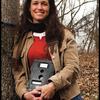 Marcella Kelly
Marcella Kelly
6 July 2021 12:00am
BearID Featured: Artificial Intelligence & Other New Technology In Bear Research
 WILDLABS Team
and 1 more
WILDLABS Team
and 1 more
1 July 2021 12:00am
PhDs (or MSc) in tech + nature conservation ?
28 April 2021 9:16am
26 May 2021 9:14pm
carlybatist, I can help with python. Is there anything you or people in your network may need help?
About ML - can you tell 3 main challenges you'd think as priority in conservation, that ML can be helpful ? Also, anything that also small NGOs may struggle to work on, due to limited budget / IT capacity, and so they may benefit from freelancers ? Large NGOs or international agencies will likely work with established companies. I'ìd like to know if there could be a niche were I can interact directly with NGOs and philantropic institutions, both for supporting with services, as well for listening to feedback to project proposals that could benefit from mutual collaborations (e.g. tech pilot + fundraising = startup and product iterations with lower costs).
Also, can you mention a few activities / roles that may offer both outdoor + analytics / tech skills ?
Piorirty is outdoor for me. But since I have a few tech skills and management skills, im trying to trade them!
26 May 2021 10:04pm
You should join the Key Conservation app, which connects people and NGO's for specific needs, whether funding, time, or skills (programming included). Organizations can list particular things they need and you can get day-to-day updates on progress.
In terms of how ML is used in conservation, it's mostly to process the large datasets yielded by conservation tech (camera traps, passive acoustics, biologging, remote sensing/GIS). Annotating detections (which pictures have animals, which species a call belongs to, where deforestation is happening through satellite imagery, etc.).
And lots of freelancing opportunities come up in Wildlabs - the community threads and the biweekly digest. Twitter is also great for finding those kinds of opportunities, search by relevant keywords or hashtags (e.g., #tech4wildlife). I would also start following conservation tech organizations on LinkedIn and Twitter or subscribing to their newsletters or listservs so you don't miss opportunities as they come up.
New Papers: Methods in Ecology and Evolution
23 April 2021 12:00am
New Papers: Remote Sensing in Ecology and Conservation
22 April 2021 12:00am
BirdCLEF 2021 Kaggle Challenge
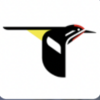 The Cornell Lab of Ornithology
The Cornell Lab of Ornithology
19 April 2021 12:00am
Looking for animal emotions data for ML
17 March 2021 12:43pm
26 March 2021 4:06pm
There is a TON of research on ML algorithms for all this!
For facial rec-
BearID project - http://bearresearch.org/ (individual facial rec for grizzlies)
AnimalFACS (facial action coding system) - http://www.chimpfacs.com/ (the model started with chimps but they now have versions for orangutans, gibbons, macaques, dogs, cats, and horses)
A lot of the gesture/facial expression literature is focused on primates, particularly apes, so if you do a Google Scholar search on that, you'll loads of papers that have looked into this as well.
For vocals -
Carlson, N. V., Kelly, E. M., & Couzin, I. (2020). Individual vocal recognition across taxa: a review of the literature and a look into the future. Philosophical Transactions of the Royal Society B, 375(1802), 20190479.
Turesson, H. K., Ribeiro, S., Pereira, D. R., Papa, J. P., & de Albuquerque, V. H. C. (2016). Machine learning algorithms for automatic classification of marmoset vocalizations. PloS one, 11(9), e0163041.
Wijers, M., Trethowan, P., Du Preez, B., Chamaillé-Jammes, S., Loveridge, A. J., Macdonald, D. W., & Markham, A. (2020). Vocal discrimination of African lions and its potential for collar-free tracking. Bioacoustics, 1-19.
Clink, D. J., Crofoot, M. C., & Marshall, A. J. (2019). Application of a semi-automated vocal fingerprinting approach to monitor Bornean gibbon females in an experimentally fragmented landscape in Sabah, Malaysia. Bioacoustics, 28(3), 193-209.
Spillmann, B., van Schaik, C. P., Setia, T. M., & Sadjadi, S. O. (2017). Who shall I say is calling? Validation of a caller recognition procedure in Bornean flanged male orangutan (Pongo pygmaeus wurmbii) long calls. Bioacoustics, 26(2), 109-120.
Hantke, S., Cummins, N., & Schuller, B. (2018, April). What is my dog trying to tell me? The automatic recognition of the context and perceived emotion of dog barks. In 2018 IEEE International Conference on Acoustics, Speech and Signal Processing (ICASSP) (pp. 5134-5138). IEEE.
Totakura, V., Janmanchi, M. K., Rajesh, D., & Hussan, M. T. (2020). Prediction of Animal Vocal Emotions Using Convolutional Neural Network. International Journal of Scientific & Technology Research, 9(2), 6007-6011.
Other -
Neethirajan, S., Reimert, I., & Kemp, B. (2021). Measuring Farm Animal Emotions—Sensor-Based Approaches. Sensors, 21(2), 553.
Hong, W., Kennedy, A., Burgos-Artizzu, X. P., Zelikowsky, M., Navonne, S. G., Perona, P., & Anderson, D. J. (2015). Automated measurement of mouse social behaviors using depth sensing, video tracking, and machine learning. Proceedings of the National Academy of Sciences, 112(38), E5351-E5360.
26 March 2021 7:44pm
Thank you VERY much for that, Carly. I really appreciate it. I have only heard of the bear research project and was not aware of the others. This is very helpful.
FYI: Most studies I am aware of use ML with facial recognition software. I am interested to find out if there are recognition software/research for facial-gesture-voice-speech as this will be more accurate to read animals that have less elastic facial expressions than primates or humans.
The 2021 #Tech4Wildlife Photo Challenge: Community Highlights
25 March 2021 12:00am
Event: tinyML for Good: Conservation & Climate
 Edge Impulse
Edge Impulse
22 March 2021 12:00am
Allen Coral Atlas - using machine learning to map coral reefs
17 March 2021 6:48pm
Building Experts Into AI
15 March 2021 12:00am
Kaggle Competition: iWildcam 2021 - FGVC8
12 March 2021 12:00am
Funding Opportunity: COVID-19 Science Fund
10 March 2021 12:00am
Resource: WildID
8 March 2021 12:00am
Looking help with camera trapping for Jaguars: Software for species ID and database building
23 February 2021 9:49pm
2 March 2021 3:44pm
Hi Carmina,
I definitely get not wanting to create another copy of your data, I realized this about Camelot just a little late, and we did have to buy a 4 TB external hard drive. The unique names that Camelot assigns to its copies of the data are also not friendly if you want to move things around.
I mentioned that Wild.ID is being more and more integrated with Wildlife Insights, but it can still be used as a standalone software. It has the same format as Camelot, but I think it doesn't create and additional copy (I might be wrong about this, though). You should take a look at this, it might be what you need.
As for detection, Camelot puts together batches of photos, uploads them to Microsoft's servers, and then gets the resulting database back. The model they use, however, is available and you can run it on your own computer. The AI model that it uses is called Megadetector. You used to have to run it from the command line, but recently Petar Gyurov posted this GUI that makes using Megadetector soooo much easier. You just tell the software where your photos are, and let it run. You can decide whether you trust it enough to sort your photos automatically, or check yourself. In most conditions it performs very well, you may have issues when you can only see parts of an animal behind some vegetation. The check would take less time than going through the raw pictures, since it marks boxes where it found things. You still have to identify the pictures after they're sorted. Megadetector will work on any computer, but it performs much faster if it has an Nvidia graphical card. However, setting this up is a little tricky.
Finally, the output from Megadetector can be integrated into the workflow of Timelapse, another software. I've never used this one so I can't really say how well it works.
Integrating everything can be a little intimidating, so feel free to ask if you need guidance for any of these steps.
Best,
Juan
4 March 2021 9:34pm
Hi.
Thanks a lot for your explanation. I decided to try megadetector but I'm dumb with computers and of course I don't have a Nvidia graphical card, can you help me?
If it is better for you to talk directly, you can write to reservajaguar@gmail.com
I'm so happy I can finally see the light with so many photos :)
Thanks again
Carmina
4 March 2021 11:06pm
Sure thing, I'll email you directly.
Tech Tutors: How do I strategically allocate drones for conservation?
16 February 2021 1:01pm
Transparency, AI, and Machine Learning Conservation Impacts
3 February 2021 10:12pm
5 February 2021 2:21pm
Hello,
Just spit-balling some ideas, but you might check out WildMe/WildBook, Widlife Insights, the ICARUS/Movebank project, Arbimon, Norway's new imaging initiative (https://www.planet.com/nicfi/), Hack the Poacher, Vulcan's EarthRanger, SmartParks, the SMART app/platform, the TEAM camera trap network?
Not sure if any of this is what you're looking for but just some things that came to mind!
13 February 2021 12:14am
Thanks Carly,
These are great ideas. The movebank recommendation reminds me of some work from Save the Elephants that used its transparency to exonerate an elephant that had been accused of eating up some crops. I didn't know about Hack the Poacher - I'll check that out. I'm familiar with the others, but will dig deeper to understand the transparency angle. I work on Wildlife Insights, so know that one well. TEAM has essentially morphed into Wildlife Insights as I understand things.
Thanks again!
Best,
Thau
Windows explorer video thumbnails
26 September 2019 9:31am
12 February 2021 7:10pm
This works very well, and can remove the movie strip icons from the edges of the thumbnails, which obscure animals just coming into the frame. https://icaros.en.softonic.com/
Intro to Embedded Machine Learning on Coursera
9 February 2021 12:00am

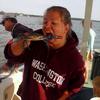


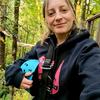



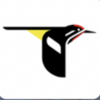









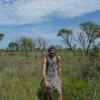







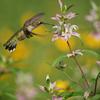
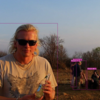
















26 May 2021 5:09pm
I think programming and machine learning are what I wish I did in uni the most. Particularly Python coding. Most biologists use R/Rstudio but Python is more popular in the tech world. And machine learning is taking over everything, conservation included, so it's definitely a high-demand skill.